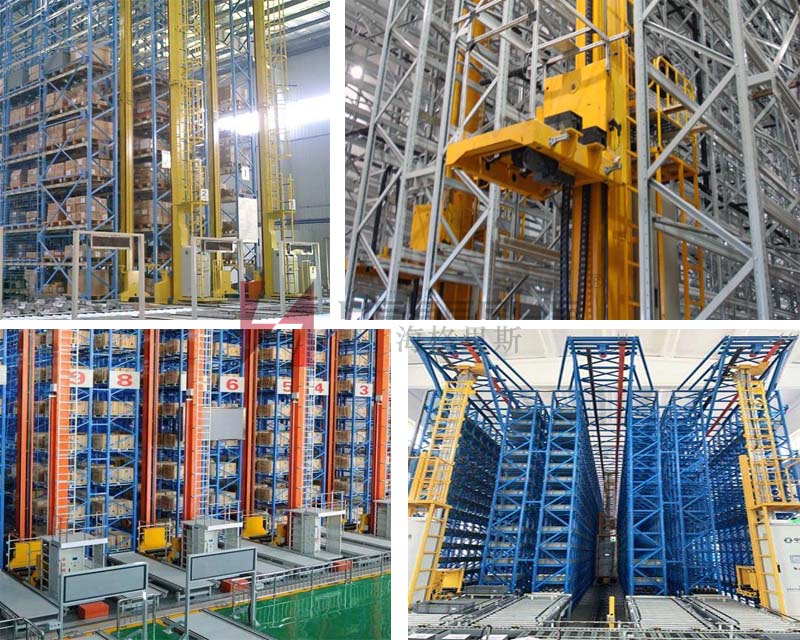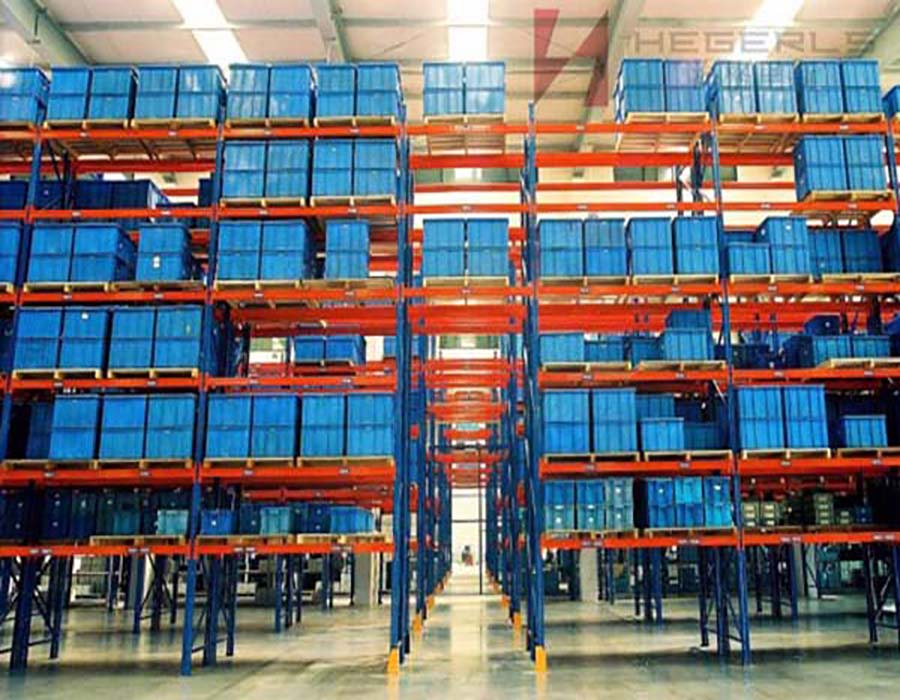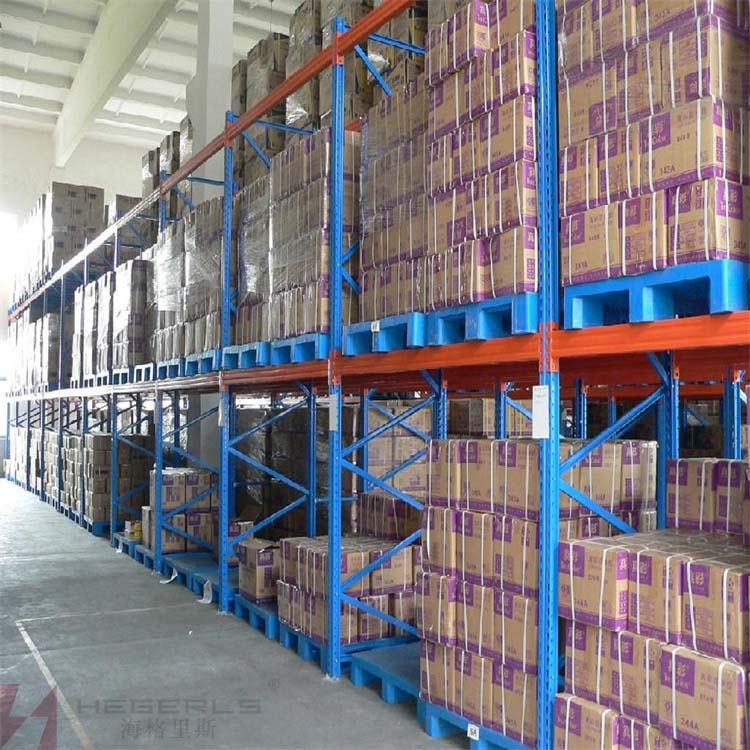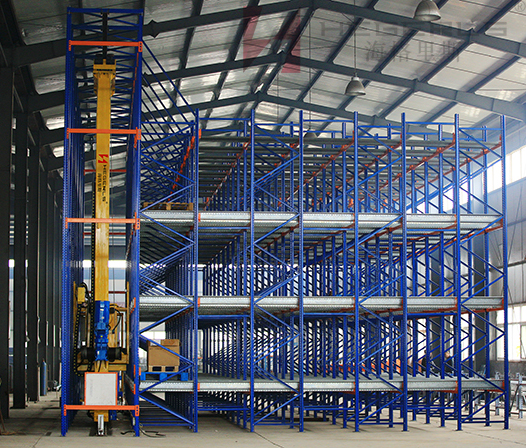With the rapid development of modern logistics, the continuous improvement of logistics automation and informatization, as well as the continuous progress of modern information technology, Internet of things and other technologies, automated three-dimensional warehouses have achieved blowout development and become an important part of modern logistics warehousing management system. So how to build and design an automated three-dimensional warehouse suitable for enterprises? Now follow the steps of Hagrid to see how Hagrid manufacturers build and design automated warehouse?
Automated three-dimensional warehouse is a new concept in logistics warehousing. The use of three-dimensional warehouse equipment can realize the rationalization of high-level warehouse, the automation of access and the simplification of operation; Automated three-dimensional warehouse is a form with high technical level at present. Automated three-dimensional warehouse (as / RS) is a complex automation system composed of three-dimensional shelves, trackway stackers, in / out tray conveyor system, size detection barcode reading system, communication system, automatic control system, computer monitoring system, computer management system and other auxiliary equipment such as wire and cable bridge distribution cabinet, tray, adjustment platform, steel structure platform and so on. The rack is a building or structure of steel structure or reinforced concrete structure. The rack is a standard size cargo space. The laneway stacking crane runs through the laneway between the racks to complete the storage and retrieval work. Computer and bar code technology are used in management. The first-class integrated logistics concept, advanced control, bus, communication and information technology are applied to carry out the warehousing operation through the coordinated action of the above equipment.
Main advantages of automated warehouse shelves:
1) The use of high-rise shelf storage and lane stacker operation can greatly increase the effective height of the warehouse, make full use of the effective area and storage space of the warehouse, centralize and three-dimensional storage of goods, reduce the floor area and reduce the land purchase cost.
2) It can realize the mechanization and automation of warehouse operations and greatly improve work efficiency.
3) Since the materials are stored in a limited space, it is easy to control the temperature and humidity.
4) Using computers for control and management, the operation process and information processing are rapid, accurate and timely, which can accelerate the turnover of materials and reduce the storage cost.
5) The centralized storage and computer control of goods are conducive to the adoption of modern science and technology and modern management methods.
How to build and design an automated warehouse for enterprises?
▷ preparation before design
1) It is necessary to understand the site conditions for building the reservoir, including meteorological, topographic, geological conditions, ground bearing capacity, wind and snow loads, earthquake conditions and other environmental impacts.
2) In the overall design of the automated three-dimensional warehouse, machinery, structure, electrical, civil engineering and other disciplines intersect and restrict each other, which requires the third-party logistics enterprise to consider the needs of each discipline when designing. For example, the motion accuracy of machinery should be selected according to the accuracy of structural manufacturing and the settlement accuracy of civil engineering.
3) It is necessary to formulate the investment and staffing plans of the third-party logistics enterprise on the warehousing system, so as to determine the scale of the warehousing system and the degree of mechanization and automation.
4) It is necessary to investigate and understand other conditions related to the warehousing system of the third-party logistics enterprise, such as the source of the goods, the traffic connecting the warehouse, the packaging of the goods, the method of handling the goods, the final destination of the goods and the means of transport.
▷ selection and planning of storage yard
The selection and arrangement of the storage yard is of great significance to the infrastructure investment, logistics cost and labor conditions of the storage system. Considering the urban planning and the overall operation of the third-party logistics enterprise, it is better to choose the automated three-dimensional warehouse close to the port, wharf, freight station and other transportation hubs, or close to the production place or raw material origin, or close to the main sales market, so as to greatly reduce the expenses of the third-party logistics enterprise. Whether the location of the storage yard is reasonable also has a certain impact on environmental protection and urban planning. For example, choosing to build an automated three-dimensional warehouse in a commercial area subject to traffic restrictions, on the one hand, is incompatible with the bustling business environment, on the other hand, it costs a high price to buy land, and most importantly, due to traffic restrictions, it is only possible to transport goods in the middle of the night every day, which is obviously extremely unreasonable.
▷ determine the warehouse form, operation mode and mechanical equipment parameters
The form of warehouse needs to be determined on the basis of investigating the variety of goods in warehouse. Generally, the unit goods format warehouse is adopted. If there are a single or few types of goods stored, and the goods are in large batches, gravity shelves or other forms of through warehouses can be adopted. Whether stacking picking is required is determined according to the process requirements of issue / receipt (whole unit or scattered issue / receipt). If picking is required, the method of picking is determined.
Another operation mode is often adopted in the automated three-dimensional warehouse, which is the so-called “free cargo location” mode, that is, goods can be put into storage nearby. In particular, for goods that are frequently put in and out of the warehouse, too long and overweight, they should try their best to work near the place of arrival and delivery. This can not only shorten the time of putting in and out of the warehouse, but also save handling costs.
There are many kinds of mechanical equipment used in automated three-dimensional warehouses, generally including Lane stackers, continuous conveyors, high-rise shelves, and automatic guided vehicles with a high degree of automation. In the overall design of the warehouse, the most suitable mechanical equipment should be selected according to the size of the warehouse, the variety of goods, the frequency of warehousing and so on, and the main parameters of these equipment should be determined.
▷ determine the form and specification of goods unit
Since the premise of automated three-dimensional warehouse is unit handling, it is a very important issue to determine the form, size and weight of goods units, which will affect the investment of the third-party logistics enterprise in the warehouse, and also affect the configuration and facilities of the whole warehousing system. Therefore, in order to reasonably determine the form, size and weight of cargo units, all possible forms and specifications of cargo units should be listed according to the results of investigation and statistics, and reasonable choices should be made. For those goods with special shape and size or heavy weight, they can be handled separately.
▷ determine the library capacity (including cache)
Warehouse capacity refers to the number of cargo units that can be accommodated in a warehouse at the same time, which is a very important parameter for an automated three-dimensional warehouse. Because of the impact of many unexpected factors in the inventory cycle, the peak value of the inventory will sometimes greatly exceed the actual capacity of the automated three-dimensional warehouse. In addition, some automated three-dimensional warehouses only consider the capacity of the shelf area and ignore the area of the buffer area, resulting in insufficient area of the buffer area, which makes the goods in the shelf area unable to come out and the goods outside the warehouse unable to go in.
▷ distribution of warehouse area and other areas
Because the total area is certain, many third-party logistics enterprises only pay attention to the area of office and experiment (including research and development) when building automated three-dimensional warehouses, but ignore the area of warehouses, which leads to this situation, that is, in order to meet the needs of warehouse capacity, they have to develop to space to meet the requirements. However, the higher the shelf, the higher the procurement cost and operation cost of mechanical equipment. In addition, because the optimal logistics route in the automated three-dimensional warehouse is linear, it is often limited by the plane area when designing the warehouse, resulting in the detour of its own logistics route (often S-shaped or even mesh), which will increase a lot of unnecessary investment and trouble.
▷ matching of personnel and equipment
No matter how high the automation level of the automated three-dimensional warehouse is, the specific operation still requires a certain amount of manual labor, so the number of staff should be appropriate. Insufficient staff will reduce the efficiency of the warehouse, and too many will cause waste. The automated three-dimensional warehouse adopts a large number of advanced equipment, so it requires a high quality of personnel. If the quality of personnel does not keep up with it, the throughput capacity of the warehouse will also be reduced. Third party logistics enterprises need to recruit special talents and provide them with special training.
▷ transmission of system data
Because the data transmission path is not smooth or the data is redundant, the data transmission speed of the system will be slow or even impossible. Therefore, the information transmission within the automated three-dimensional warehouse and between the upper and lower management systems of the third-party logistics enterprise should be considered.
▷ overall operational capability
There is a problem of barrel effect in the coordination of the upstream, downstream and internal subsystems of the automated three-dimensional warehouse, that is, the shortest piece of wood determines the capacity of the barrel. Some warehouses use a lot of high-tech products, and all kinds of facilities and equipment are very complete. However, due to poor coordination and compatibility among subsystems, the overall operation capacity is much worse than expected.
Post time: Sep-08-2022







